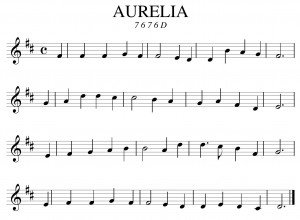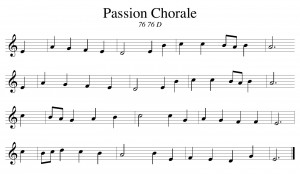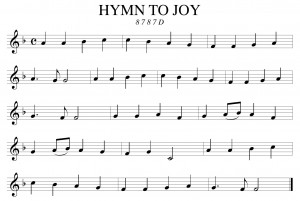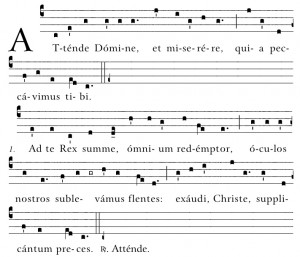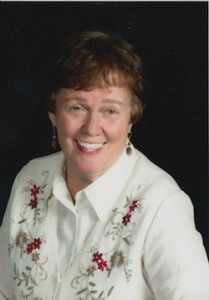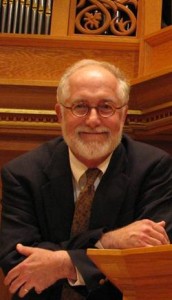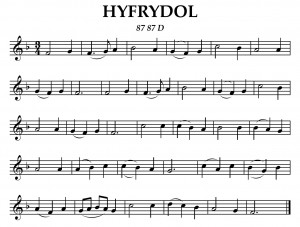 Hyfrydol is a Welsh hymn tune composed by Rowland Prichard in 1844. It was originally published in the composer’s handbook to the Lutheran Hymnal Cyfaill y Cantorion (“The Singers’ Friend”). The best-known arrangement is probably that by Ralph Vaughan Williams, which he originally produced for his revision of the English Hymnal. Popular texts paired with this tune include William Chatterton Dix’s hymn Alleluia! Sing to Jesus!, Charles Wesley’s Love Divine, All Loves Excelling and Come Thou Long-Expected Jesus, Francis Harold Rowley’s (1854-1952) I Will Sing the Wondrous Story (1886), John Wilbur Chapman’s Our Great Savior (“Jesus, what a friend for sinners”) (1910), and Philip P. Bliss’ I Will Sing of My Redeemer (1876), as well as many other hymns from a variety of faith traditions.
Hyfrydol is a Welsh hymn tune composed by Rowland Prichard in 1844. It was originally published in the composer’s handbook to the Lutheran Hymnal Cyfaill y Cantorion (“The Singers’ Friend”). The best-known arrangement is probably that by Ralph Vaughan Williams, which he originally produced for his revision of the English Hymnal. Popular texts paired with this tune include William Chatterton Dix’s hymn Alleluia! Sing to Jesus!, Charles Wesley’s Love Divine, All Loves Excelling and Come Thou Long-Expected Jesus, Francis Harold Rowley’s (1854-1952) I Will Sing the Wondrous Story (1886), John Wilbur Chapman’s Our Great Savior (“Jesus, what a friend for sinners”) (1910), and Philip P. Bliss’ I Will Sing of My Redeemer (1876), as well as many other hymns from a variety of faith traditions.
See a list of other popular hymn and chorale themes here.
Recordings:


Organ Ovations & Improvisations
Includes an improvised suite on the tune Hyfrydol by Tom Trenney.
Videos:
Kerry Beaumont – Improvisation on ‘Hyfrydol’ – Coventry Cathedral
Wm. Glenn Osborne – Prelude on ‘Hyfrydol’ – Cathedral of Mary Our Queen
Wm. Glenn Osborne – Postlude on ‘Hyfrydol’ – Cathedral of Mary Our Queen
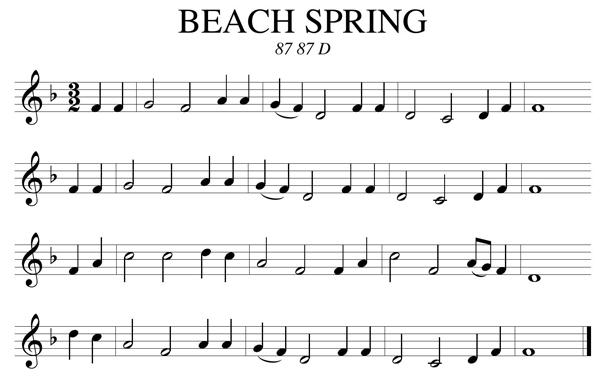 Attributed to B. F. White, the tune BEACH SPRING first appeared in The Sacred Harp published in Philadelphia in 1844. The tune is named after the Beach Spring Baptist Church in Harris County, Georgia, where White lived. It is a strong, pentatonic tune cast into a rounded bar form (AABA).
Attributed to B. F. White, the tune BEACH SPRING first appeared in The Sacred Harp published in Philadelphia in 1844. The tune is named after the Beach Spring Baptist Church in Harris County, Georgia, where White lived. It is a strong, pentatonic tune cast into a rounded bar form (AABA).
